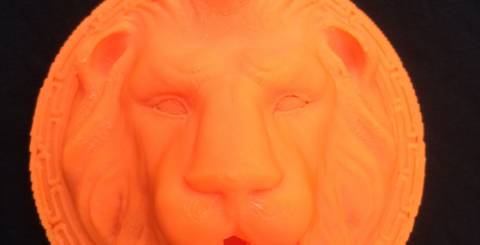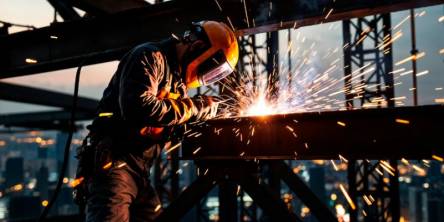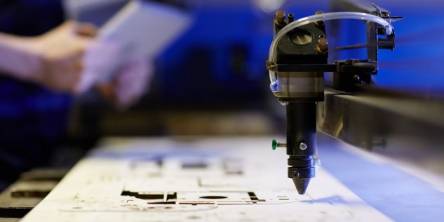3D Printing and It's Contribution to Prototyping Process

Prototyping is the creation of a preliminary model or sample, enabling to test and evaluate it pre-production, making the necessary modifications. Many companies nowadays are turning to 3D printing, also known as additive manufacturing, which is a great solution for producing the prototype. Parts are created directly from a design file the process saves time and money. In recent years 3D printers have become faster, easier to use and handle multiple materials at the same time, thus considered the future of product design and manufacturing.
Producing any product can be a long, complex and expensive process involving lots of trials and errors. The process includes designing, drawing, testing, changing, correcting, redesigning etc. A lot of work has to go into perfecting any part before mass producing it. This is where prototyping can contribute a great deal. By fabricating, machining or producing a prototype one can create a preliminary model, test and evaluate it and make the necessary changes and modifications to it, all prior to launching production. Prototyping is critical for verification of the product design and its assembly.
The prototyping process allows for the discovery of errors in early stages, so that redesign can take place in order to perfect the product. It brings efficiency to the process and saves companies a great deal of time and budget, especially in cases where rigid timeline or limited budget are involved.
Many companies nowadays are turning to 3D printing which is a great solution for producing the prototype, especially in instances where the prototyping model needs to be very precise or customized to accurate details. 3D printing technology, also known as additive manufacturing, has become more and more popular in recent years. The parts built in the 3D printer are created directly from the design file. This means that you can avoid time and cost of tooling, and also able to change the designs digitally and create updated prototypes in less time, helping move to the production and manufacturing process faster. In addition, the 3D printer can use multiple materials at the same time to produce the prototype.
When creating the part with the 3D printer you can actually see the model or prototype, touch and inspect it. What you have in your hands is a physical sample of your end-product. You can create it from same or similar materials to the finished product. You then also have the ability to test your product under demanding requirements and conditions, such as withstanding wind, heat, water, coatings, paints etc. The testing phase is crucial, so that you can make the necessary tweaking and improvements of the product as needed, ensuring that what you have is a quality product. You cannot do that if all you have is a CAD design on your computer, and it is hard to visualize it even if you are using 3D files.
In recent years 3D printers have become faster, easier to use and handle multiple materials at the same time, thus more popular. They can be used to create prototypes in endless types of industries, including industrial manufacturing, automotive, aerospace, defense, pharmaceutical, medical, dental and health care, sports, art, architecture, hobby models, consumer goods and electronics and many more. Not only 3D printing is financially and time-wise beneficial, but its production process introduces a more ecological way of creating the product – Not a lot of scrap material which needs to be recycled is involved. In fact, the future of product development and manufacturing now lies in the hands of those revolutionized high-technology printers.
3D printing can also be used for foam prototypes. Companies can build their foam prototypes in a traditional way or in a modern way. The traditional venue includes pouring two-part urethane liquids into hard tools or cutting existing blanks of foam into a specific shape. While these methods can produce foam prototypes, they can be time consuming and aren’t particularly cost-effective in low volumes. The other venue would be pairing foam with prototyping (additive manufacturing). Instead of injecting foam into hard metal or silicone tools, you can build alternative tooling with durable thermoplastics like ABS. This method will eliminate hard tooling costs, improve production time, enable creating complex designs, allow us to find customized foam solution.
Similar Articles
When you see a steel ship in the harbor, the first impression is usually sheer scale.
Explore CNC turning—its components, process, benefits, applications, and future trends shaping modern precision manufacturing in various industries.
In the competitive industry of car manufacturing, attaining exceptional performance along with an innovative design needs the incorporation of modern manufacturing technologies
Facing delays, quality issues, or supply chain problems in hardware manufacturing? Learn the top 7 challenges—and practical fixes—to streamline production.
In the rapidly advancing landscape of high-tech manufacturing, electronics, and materials science, diamonds are no longer just gemstones they’re high-performance materials redefining what’s possible in technology.
A business in the manufacturing industry today has to ensure that it chooses the precision-engineered components suppliers keenly since the competition is very stiff
Selective Laser Sintering, or SLS, has established itself as one of the most reliable and widely used 3D printing technologies. This method is valued for its ability to produce complex, durable, and high-quality parts without the constraints of traditional manufacturing.
In the retail and display industry, the visual appeal of products is paramount. Customers are constantly drawn to displays that are not only eye-catching but also provide an immersive experience.
As previously established, CO2 laser technology operates by shining a high-power infrared beam on a mixture of gas that contains carbon dioxide, nitrogen, and helium. This technology is well known for the fact that it is able to engrave onto a variety of materials such as wood, glass, plastic, leather, and even some metals with high precision and without contact.









